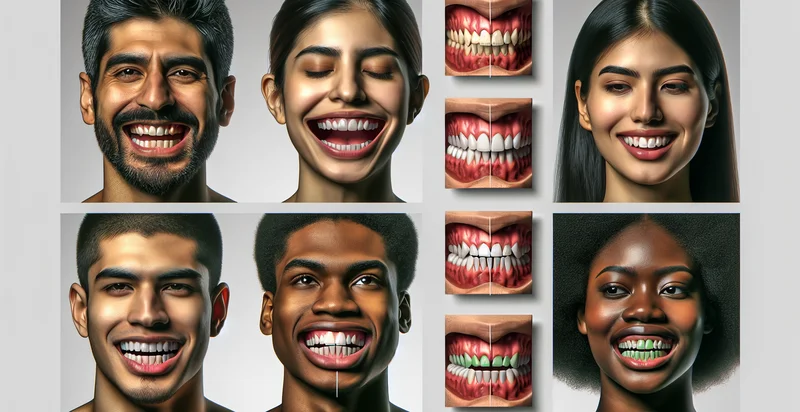Identify bite classification
using AI
Below is a free classifier to identify bite classification. Just upload your image, and our AI will predict what type of bite it is - in just seconds.

Contact us for API access
Or, use Nyckel to build highly-accurate custom classifiers in just minutes. No PhD required.
Get started
import nyckel
credentials = nyckel.Credentials("YOUR_CLIENT_ID", "YOUR_CLIENT_SECRET")
nyckel.invoke("bite-classification", "your_image_url", credentials)
fetch('https://www.nyckel.com/v1/functions/bite-classification/invoke', {
method: 'POST',
headers: {
'Authorization': 'Bearer ' + 'YOUR_BEARER_TOKEN',
'Content-Type': 'application/json',
},
body: JSON.stringify(
{"data": "your_image_url"}
)
})
.then(response => response.json())
.then(data => console.log(data));
curl -X POST \
-H "Content-Type: application/json" \
-H "Authorization: Bearer YOUR_BEARER_TOKEN" \
-d '{"data": "your_image_url"}' \
https://www.nyckel.com/v1/functions/bite-classification/invoke
How this classifier works
To start, upload your image. Our AI tool will then predict what type of bite it is.
This pretrained image model uses a Nyckel-created dataset and has 20 labels, including Anterior Open Bite, Bilateral Crossbite, Class I Bite, Class Ii Bite, Class Iii Bite, Crossbite, Crowding, Deep Bite, Deep Overbite and Mild Overbite.
We'll also show a confidence score (the higher the number, the more confident the AI model is around what type of bite it is).
Whether you're just curious or building bite classification detection into your application, we hope our classifier proves helpful.
Related Classifiers
Need to identify bite classification at scale?
Get API or Zapier access to this classifier for free. It's perfect for:
- Animal Bite Detection: This function can be utilized in veterinary clinics to automatically classify images of animal bites, distinguishing between bites that require immediate medical attention and those that can be treated at home. By streamlining the diagnosis process, veterinarians can focus on more complex cases and increase their efficiency.
- Insurance Claim Assessment: Insurance companies can employ the bite classification feature to automatically assess and classify images of bite injuries submitted in claims. By accurately identifying the severity and type of bite, insurers can expedite claims processing and reduce fraudulent claims.
- Emergency Response Triage: Emergency services can integrate this function into their triage systems to quickly classify bite injuries in real-time. This would allow first responders to prioritize cases based on urgency, ensuring the most serious cases receive immediate care.
- Legal Evidence Analysis: Law enforcement agencies and legal teams can use the bite classification tool to analyze evidence in cases involving animal attacks. By providing a standardized analysis of bite types and severity, it can aid in legal proceedings and ensure accurate representation of incidents.
- Public Health Monitoring: Public health organizations can use the classifier to analyze and track image data of animal bites reported in various regions. This information can be invaluable for monitoring trends, identifying high-risk areas, and informing public safety campaigns or interventions.
- Educational Resources for Pet Owners: Veterinary clinics and pet care organizations can implement the bite classification function on their websites or apps to educate pet owners. By allowing owners to submit images of bites for analysis, they can receive tailored advice and understand when to seek veterinary assistance.
- Research and Development in Animal Behavior: Researchers studying animal behavior can classify bite images as part of their studies on aggression and social interactions in animals. This data can provide insights into the causes and contexts of bites, which may contribute to behavioral understanding and improvements in training techniques.


